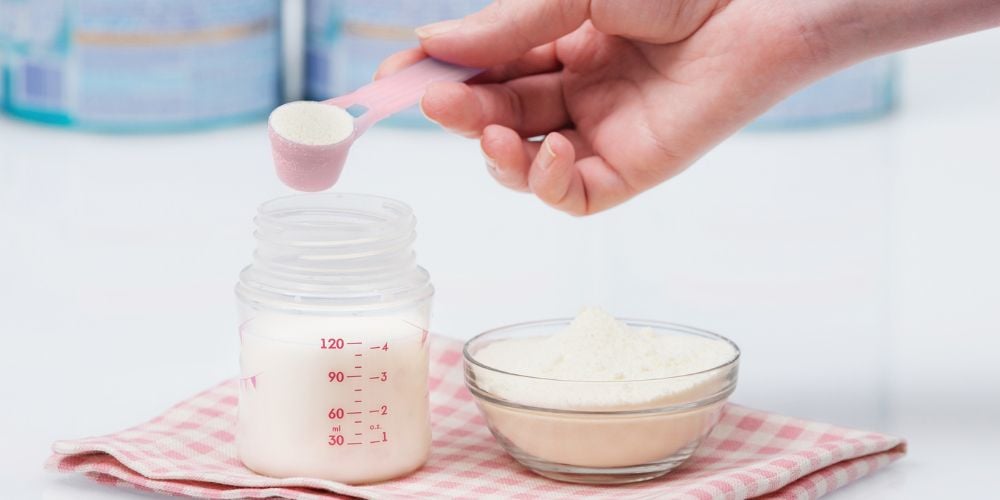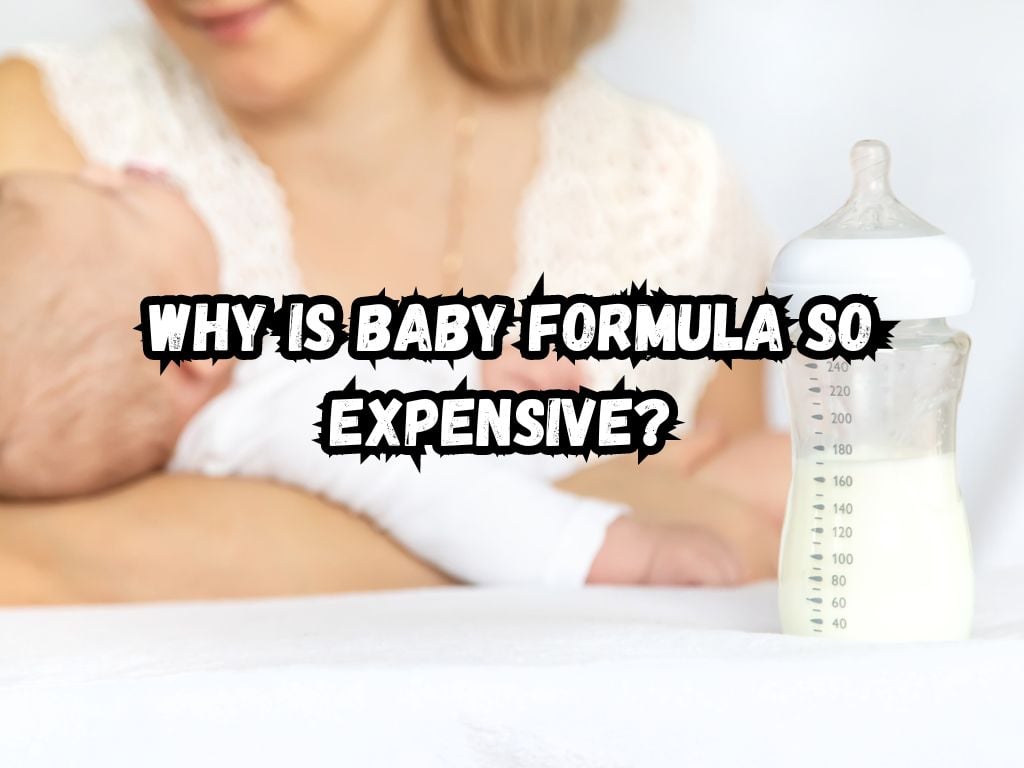The cost of baby formula has become a growing concern for parents and caregivers. Many wonder why this essential product comes with such a hefty price tag.
In this article, we will explore the factors that contribute to the expensive nature of baby formula.
By understanding these factors, parents and caregivers can make informed decisions about feeding their little ones without breaking the bank.
Why is Baby Formula So Expensive? Government Regulations and Cost Increase
One major factor influencing the price of baby formula is government regulations. Manufacturers are required to meet stringent guidelines to ensure the safety and quality of the product.
These regulations often involve expensive testing, research, and compliance measures, which result in increased production costs. As a result, manufacturers pass these costs on to consumers, contributing to the high price of baby formula.
In order to meet government regulations, baby formula manufacturers have to invest in thorough testing to ensure that their products are safe for infants. This involves analyzing the composition of the formula, testing for the presence of contaminants, and conducting clinical trials to determine the product’s safety and efficacy.
Additionally, manufacturers must adhere to regulations regarding labeling, packaging, and marketing of baby formula.
The cost of meeting these regulations can be significant, especially for smaller manufacturers who may not have the economies of scale enjoyed by larger companies.
Compliance with government regulations requires ongoing monitoring and documentation, which further adds to the cost of production. All of these factors contribute to the overall increase in the price of baby formula.

Production and Supply Chain Challenges
Another factor that impacts the cost of baby formula is the production and supply chain challenges that manufacturers face.
The production process for baby formula involves multiple steps, including sourcing raw materials, formulation, testing, and packaging. Each step presents its own set of challenges and costs.
One of the significant challenges in the production of baby formula is ingredient shortages. Manufacturers rely on a variety of ingredients, such as proteins, fats, carbohydrates, and vitamins, to create a nutritionally balanced product.
Any disruptions or shortages in the supply of these ingredients can impact the availability and cost of formula production.
Production facilities and equipment also require ongoing maintenance and upgrades to ensure food safety and quality.
Manufacturers need to invest in state-of-the-art machinery and technologies to meet the regulatory requirements and maintain product consistency. These investments contribute to the overall cost of production and, consequently, the price of baby formula.
Moreover, transportation challenges can affect the cost of baby formula. Manufacturers need to transport raw materials and finished products across different locations, often over long distances.
Factors such as fuel prices, logistics, and infrastructure can impact transportation costs. Any disruptions in the supply chain, such as natural disasters or political instability, can further increase these costs and ultimately affect the final price of baby formula.
Branding and Marketing Strategies
Brand reputation and marketing efforts also play a significant role in the pricing of baby formula. Well-established and trusted brands often charge higher prices due to their reputation for quality and safety.
Building and maintaining a strong brand involves significant investments in marketing, research, and development.
Brands spend considerable resources on advertising campaigns, endorsements, and promotions to create awareness and build brand loyalty. These marketing expenses are factored into the price of the product.
Additionally, well-known brands may invest in conducting clinical trials and research studies to support the claims of their products, further adding to the overall cost.
Furthermore, brands often invest in partnerships with medical professionals, such as pediatricians and lactation consultants, to endorse their products.
These partnerships add credibility to the brand and create a sense of trust among parents and caregivers. However, these collaborations also come with costs that are ultimately reflected in the price of the baby formula.
Nutritional Value vs. Price
Parents and caregivers often find themselves weighing the cost of baby formula against its nutritional value.
It is essential to understand that the nutritional content of baby formula is regulated by government agencies to ensure its adequacy for infant development. Therefore, most baby formula brands, regardless of their price, meet the minimum nutritional requirements.
However, more expensive formula brands may offer additional benefits or specialized formulations. For example, some brands may offer organic options, which use organic ingredients in their formulations.
These organic ingredients often come with a higher price tag due to the more stringent requirements for organic farming and production.
Furthermore, certain formulas may contain specific nutrients or additives targeted towards specific needs, such as formulas for babies with digestive issues or allergies. These specialized formulations require additional research and development, which impacts the cost of production and, subsequently, the price of the formula.
It is important for parents and caregivers to carefully consider their baby’s individual needs and consult with healthcare professionals before opting for a specific brand or formulation.
The decision regarding the choice of baby formula should be based on the infant’s nutritional requirements rather than solely on price.

Global Market Dynamics
The price of baby formula can vary significantly across different countries due to various factors, including import/export regulations, local manufacturing costs, and economic conditions.
Import/export regulations and tariffs imposed by governments can impact the price of baby formula in a particular country. Some countries may impose restrictions or tariffs on imported formula, making it more expensive for consumers.
Moreover, local manufacturing costs can differ significantly from one country to another. Factors such as labor costs, raw material availability, and utility expenses can all contribute to the difference in production costs and, ultimately, the retail price of baby formula.
Economic conditions, such as currency exchange rates and inflation, can also affect the price of baby formula in different markets. A devaluation of the local currency or an increase in inflation can lead to a higher cost of imported ingredients, increasing the price of the formula.
Additionally, market dynamics and competition play a role in pricing as well. In highly competitive markets, manufacturers may try to offer competitive pricing to gain market share.
On the other hand, in less competitive or monopolistic markets, manufacturers may have more control over pricing, leading to higher prices.
Alternatives and Cost-Saving Tips
For parents looking to reduce the cost of baby formula, there are a few alternatives and cost-saving tips to consider.
1. Breastfeeding
Breastfeeding is a cost-effective option that provides essential nutrients and antibodies to babies. Breast milk is free, convenient, and offers various health benefits for both the baby and the mother.
The World Health Organization (WHO) recommends exclusive breastfeeding for the first six months of a baby’s life, followed by continued breastfeeding along with complementary foods for up to two years or beyond.
2. Generic or Store Brand Formulas
Another option to consider is generic or store brand formulas, which are often more affordable compared to branded formulas.
These formulas are required to meet the same regulatory standards as the more expensive brands, ensuring that they provide adequate nutrition for babies. Consulting with a healthcare professional can help determine if a generic or store brand formula is suitable for the baby.
3. Bulk Purchases and Coupons
Purchasing baby formula in bulk from discount retailers or utilizing coupons can help reduce expenses. Many stores offer discounts on bulk baby formula purchases, which can be cost-effective in the long run.
Additionally, manufacturers often provide coupons and promotional offers that can be used to lower the price of formula. Subscribing to newsletters or following brands on social media can help parents stay informed about such discounts and promotions.
When considering cost-saving tips, it is essential to prioritize safety and quality. Care should be taken to ensure that the generic or store brand formula purchased meets the necessary regulatory standards for infant nutrition.
Before making any changes to a baby’s feeding routine, it is advisable to consult with a healthcare professional.
Conclusion
The high cost of baby formula is influenced by various factors, including government regulations, production and supply chain challenges, branding and marketing strategies, global market dynamics, and nutritional value.
Understanding these factors can empower parents and caregivers to make informed choices that align with their budget and their baby’s needs.
While the cost of baby formula can be significant, there are alternatives and cost-saving tips available. Breastfeeding, when possible, provides a cost-effective and natural way to nourish infants.
Exploring generic or store brand formulas, purchasing in bulk, or utilizing coupons can also help reduce expenses. However, it is important to prioritize the safety and quality of the formula when considering cost-saving measures.
Ultimately, the decision regarding the choice of baby formula should be based on a balanced consideration of the baby’s nutritional needs, the family’s budget, and consultation with healthcare professionals.
By navigating the world of baby formula with knowledge and awareness, parents and caregivers can provide their little ones with the nutrition they need while managing expenses effectively.


 Tags:
Tags:










